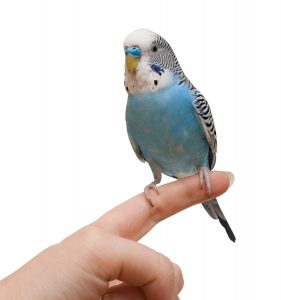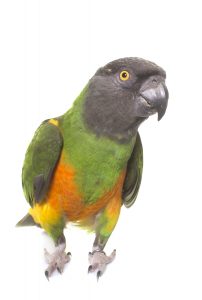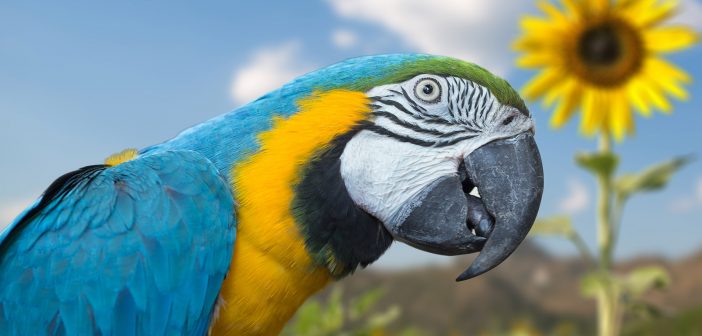 By Emily Strong, CPBC, CPBT-KA
By Emily Strong, CPBC, CPBT-KA
You get a new bird and she’s the most beautiful, adorable, delightful thing you’ve ever seen. You’re instantly in love; all you want is to become her new best friend right away. To your dismay, however, as soon as you put your hand into her cage, she bites you. Your excitement crumbles to dust as the fear floods in. “Did I just adopt a mean bird? Am I now stuck with a monster?” If this scenario sounds familiar to you, you are not alone. It happens in thousands of homes across the country every year.
The good news is, your bird isn’t mean. You didn’t adopt a monster. Your bird is just scared, and understandably so. Think about it from her point of view: her entire world has just been turned upside down. Her routine, her environment, and the humans and animals in her life have just completely changed. She has no idea where she is, who you are, or what your intentions are towards her. Are you friend or foe? She doesn’t know. She can’t read your intentions. All she has to go on is your body language. To help her understand you’re a friend, you need to learn how to become one.
Birds are prey species. Humans are a predator species. Our eyes are in front of our heads, we have big shiny teeth, and compared to parrots we are giants. When we look at new birds with our direct predator stare, we’re inadvertently threatening them. If we then reach towards them with our big predator hands, birds interpret that as a full-on attack. In such a life-or-death situation, birds typically choose flight. However, when they’re in a cage, where flight is impossible, the only option remaining to them is fight. That’s how we get bitten.
To teach a new bird that you aren’t the scary predator you appear to be, avoid directly approaching her. Stand at an angle instead of directly facing her. Tilt your head and look at her out of the corner of your eye instead of directly staring. Speak in a soft voice. Let your arms rest at your sides. Watch her body language to determine how far away she wants you to stand.
When some birds are scared, they puff up all their feathers to appear larger than they are and may lunge towards you; others press their feathers close to their body and lean away from you. In either case, she is telling you to move farther away. Listen to her. When you are at a safe distance, you can sit and read aloud, or softly sing, or just chat with her about any topic. As your new bird gets more comfortable in your presence, she’ll let you stand closer to her.
Another way you can demonstrate your friendship is by dropping a small gift off in her cage every time you walk by. Find out what your bird’s favorite treat is, then stop putting it in her bowls and toys. The only time she gets that food is when you walk by her cage. If you drop a tasty treat in her bowl every time you walk by, you can’t be all that bad, right? You’re practically Santa Claus.
Finally, think of her cage as her home. Instead of blasting through her front door every time you want to hang out, knock on the door politely and invite her out. The easiest way to do this is to attach a short perch to the inside of the cage door. Open the door and place some yummy food on the perch instead of reaching in to get your bird. When she goes to the perch to eat the food, she’ll realize she’s already out of her cage and will be more likely to come out and explore.
By taking the time to introduce yourself like this at the beginning of the relationship, you’ll have a much happier friendship over the long run. You’ll eventually be able to look at her directly, touch her, reach into her cage, and pick her up. But first things first: build trust.
Emily Strong, CPBC, CPBT-KA, is a certified behavior consultant and animal trainer with 26 years of experience in the field of animal welfare. Through her company, From Beaks To Barks, she offers behavior consults, group classes, service/therapy/ESA training, and continuing education classes and workshops.




